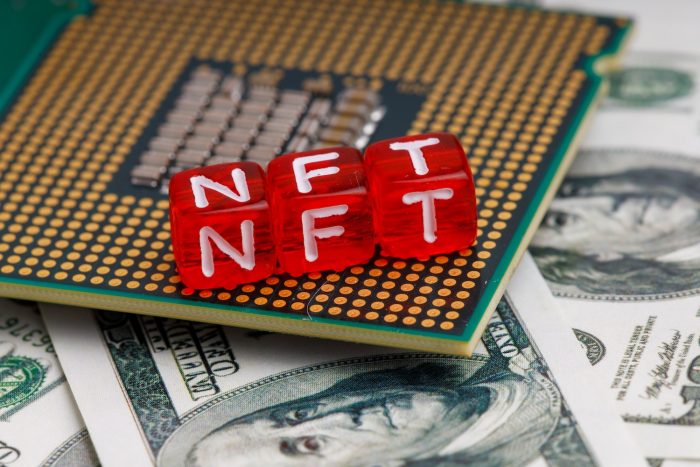
Non-fungible token, or NFT, has become a hot buzzword during the past few years because of its impact on the future of human engagement on the Internet–what is it, how do I use one, how do I make one, and then what do I do with it?
To start, an NFT is a unique digital identifier recorded on a blockchain. A blockchain is a public digital ledger that records ownership of digital assets via tokens. Information, such as the copyright of intellectual property and its ownership (original and transferred), is recorded publicly, akin to real estate transactions recorded for the public record.
Sure, other versions of that content may exist online or in the physical world in some form or fashion, but converting such content into an NFT helps establish authenticity and scarcity backed by the copyright holder of that content. That NFT can then be transferred to another party or parties, all recorded on a publicly available digital ledger (the blockchain) that serves as a de-facto certificate of authentication. The beauty of the blockchain is that the transactions are all public and cannot be altered by malicious actors or would-be hackers. And if someone manages to steal an NFT via a social engineering hack such as a phishing scam, and then sells it, that transaction will also be recorded, providing law enforcement a digital paper trail to help track down wrongdoers.
But why go through the effort? There’s no shortage of existing ways to buy or consume music, art, or any other form of readily available entertainment on the internet today.
For individual creators and associated businesses, NFTs provide a new method to monetize intellectual property and then connect to their fans or customers digitally in a new and authentic way. Despite all the buzzwords and technology jargon, at the end of the day, NFTs are all about connecting people through digital products across shared interests, wants, and desires. With this in mind, it’s best to think about blockchain and associated technologies like NFTs as a wholly new creative medium.
To paint a picture of how this works in practice, let’s take the rock band, Kings of Leon.
When You See Yourself – the first mainstream NFT album
In March 2021, Kings of Leon launched the first mainstream album as an NFT, “When You See Yourself.” It dropped in three formats as part of its “NFT Yourself” series. Fans had the option to buy the NFT as a special vinyl album packaging, as an opportunity to win front-row-for-life concert tickets, and as exclusive audiovisual art. Since an NFT’s cryptocurrency retail transaction is built into the content itself, fans are not just buying a tangible object, they are also “investing” in the artist’s creative venture. By purchasing one or all three of the “NFT Yourself” album choices, Kings of Leon fans directly invested in the band, while also helping the group create a new channel for engaging with their music. That’s not always possible with a traditional CD, MP3, or streaming service. In its first week, sales topped $2 million USD.
But what if a business is selling a service, not necessarily a tangible product such as artwork or a song? Again, by thinking about blockchain technology as a new medium, the concept can be reframed from an NFT to a non-fungible membership, or NFM.
Introducing the NFM (Non-Fungible Membership)
In the entertainment world, the direct-to-fan relationship empowers artists to help fund their creative projects and to create new versions of a product for fans to enjoy. However, blockchain technology can also power a subscription login credential for customers to consume exclusive content, enjoy a “VIP” experience, or simply become more engaged with a product, brand, or creator. This subscription experience is known as NFM, a way to engage audiences in more exclusive and creative ways while also helping to foster community with like-minded individuals or those with a specific shared interest. Once more, because NFMs are recorded on the blockchain, customers can then sell that membership to another entity or person, providing additional value and incentive to purchase NFMs from the start. This is why NFTs and NFMs are considered an investment–both the creator and consumer can enjoy additional revenue, or worst case for the purchaser, defray some of the cost of purchasing a NFM after they are finished with the service. That is not always possible with a traditional subscription.
Whether that subscription service concerns a gamer with a popular streaming channel, or an attorney who sells NFMs in exchange for legal services, the possibilities are endless for how various organizations and individuals can leverage blockchain technology for mutual benefit.
But if subscribers can simply sell their subscription (or NFT) to another person, how does the original creator benefit? Those who create, or mint, the NFT or NFM, have wide latitude about how that content is transferred–they can decide what royalties they will receive when that NFT or NFM is sold on the secondary market. By setting the rules at the onset, blockchains empower the creator to facilitate ownership and copyright benefits as they see fit. They get to set the rules–not studios, agents, lawyers, or other advisors who may not have the best interest of the original creator at heart.
A Creator Revolution
In short, NFTs are creating a revolution that can level the playing field – with who has access to new technology, how content is consumed, and who benefits from that consumption. Web3 technology gives all creators–from individuals to businesses large and small–new tools to monetize content directly to their audiences not just once, but forever.



